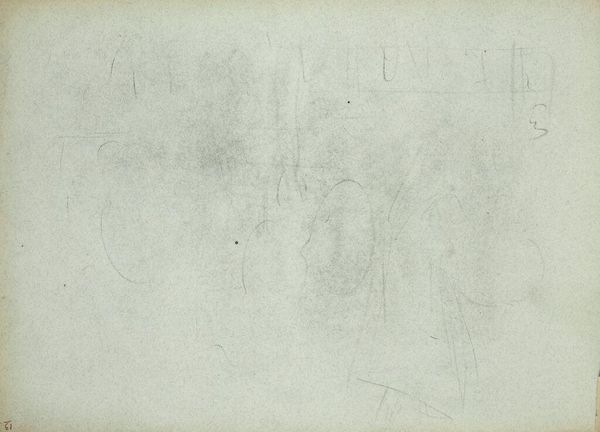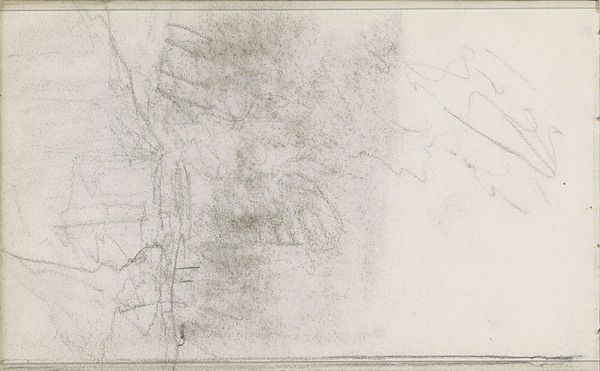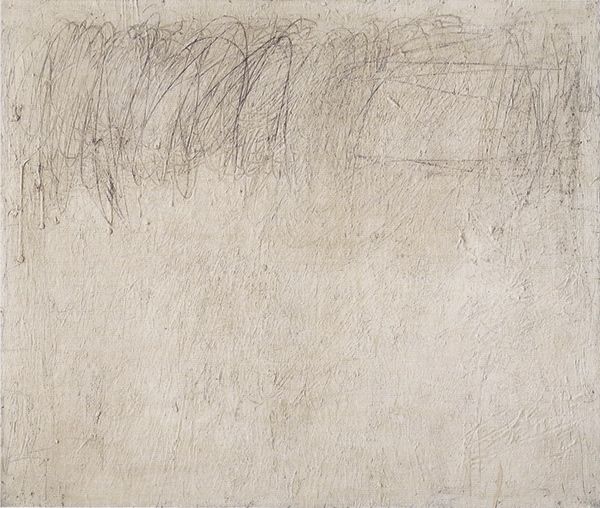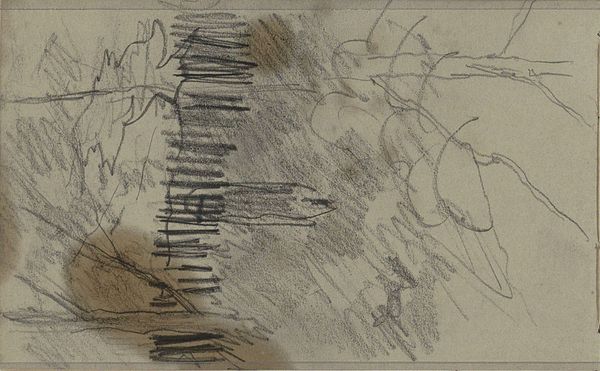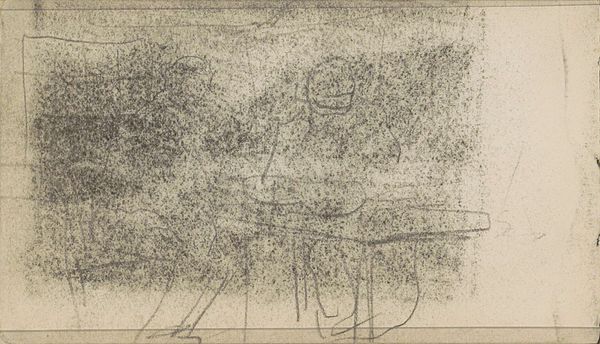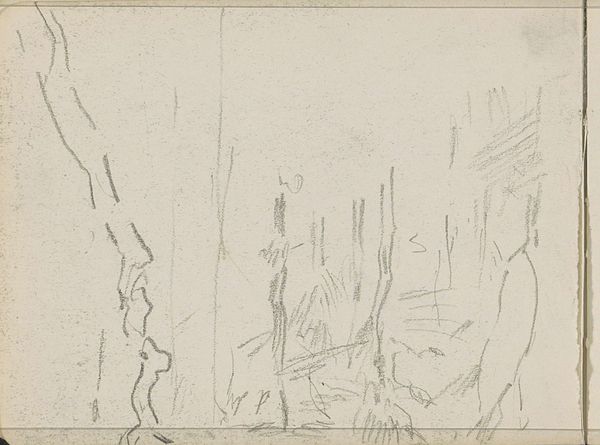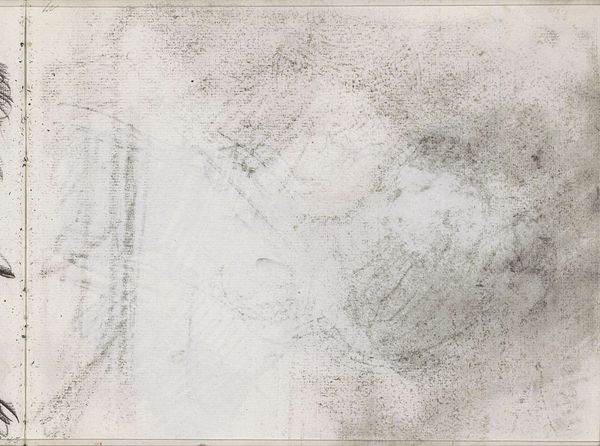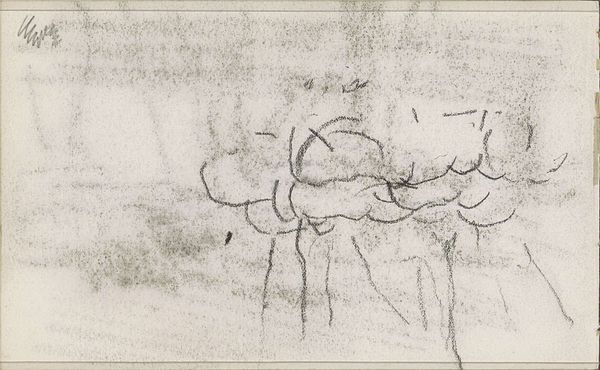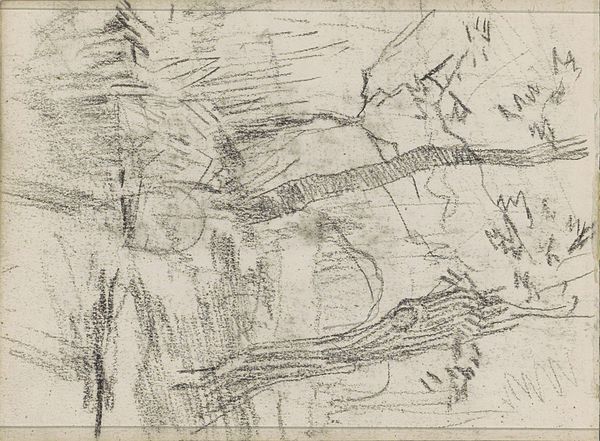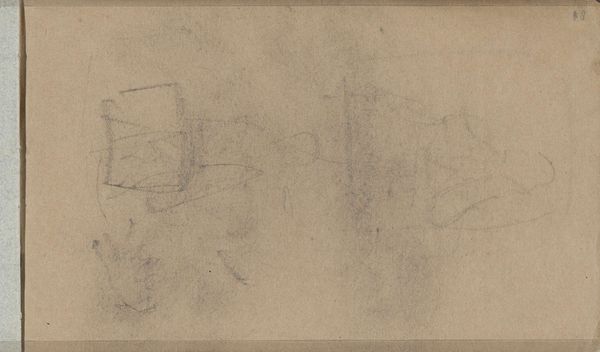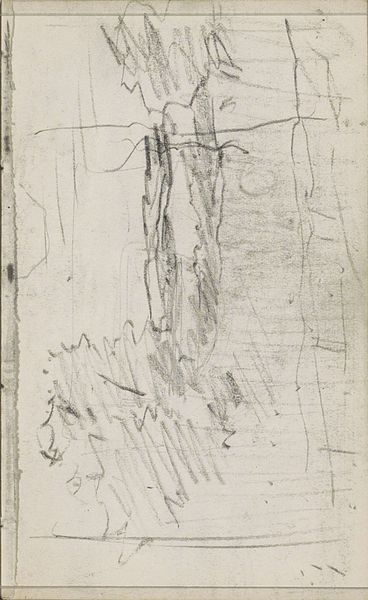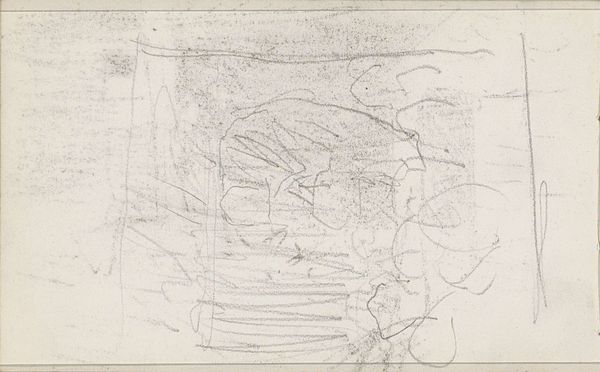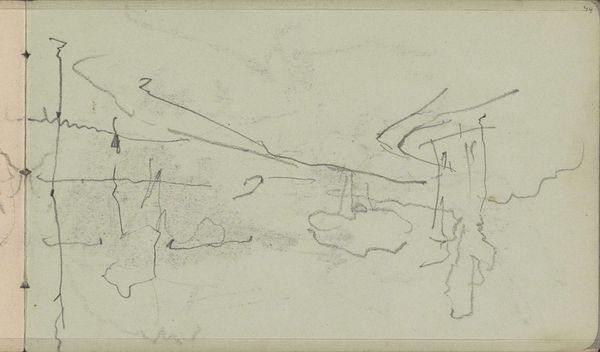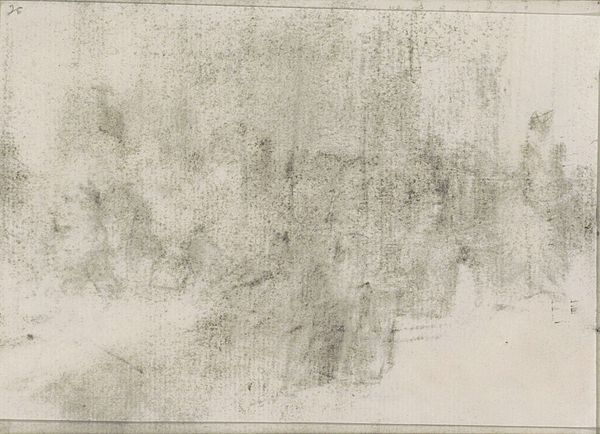
drawing, paper, pencil, graphite
#
drawing
#
amateur sketch
#
light pencil work
#
pencil sketch
#
incomplete sketchy
#
hand drawn type
#
paper
#
personal sketchbook
#
ink drawing experimentation
#
pen-ink sketch
#
pencil
#
abstraction
#
line
#
graphite
#
sketchbook drawing
#
sketchbook art
Copyright: Rijks Museum: Open Domain
Editor: This is "Studies" by Jozef Israëls, created sometime between 1834 and 1911. It’s a drawing made with pencil, graphite, and ink on paper, and it’s currently held at the Rijksmuseum. Looking at it, I’m struck by the artist's hand-- you can see their light and airy pencil movements here. It appears like they were just getting a feel for the paper, a warm up before getting into some work. What do you see in this piece? Curator: This work showcases a beautiful example of pure form. If we strip away any representational expectation, we're left with the fundamental elements of art: line, texture, and value. Observe how the artist utilizes varied pressure to create a dynamic range of light and shadow within a monochromatic scale. How does the clustering of lines create a sense of depth, even without traditional perspective? Editor: It’s almost like a dance across the page, and I notice there's no defined focal point--the energy feels evenly distributed. Do you think the lack of a subject is intentional? Curator: Indeed. It transcends the need for subject matter; instead, the act of mark-making itself becomes the subject. Note the use of repetition and variation. Lines are similar, yet subtly unique in length, direction, and density. Semiotically, the signs point to nowhere else but themselves and their materiality on paper. We aren’t looking *at* anything but instead at the core processes of creation, artistic thought given physical form. Editor: That's a new perspective for me! Seeing it as the act of creation rather than searching for a picture helps to grasp it better. Thank you. Curator: And by focusing on the materiality and the act, we remove all prior biases and consider its core intention. It is very fulfilling.
Comments
No comments
Be the first to comment and join the conversation on the ultimate creative platform.
